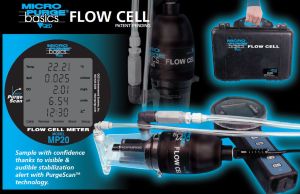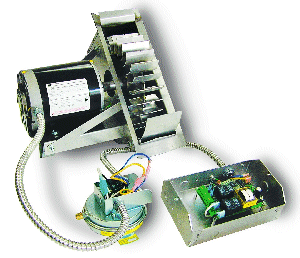 The DT-205 is a “dual technology” motion sensor. What this means is that in addition to passive infrared (PIR), the DT-205 also utilizes ultrasonic sensors. After setting up the motion sensor and playing with it a bit, my curiosity got the best of me (as it always does) and decided to crack this thing open. What a pleasant surprise to see an ATMEGA8L proudly sitting there as if it knew I’d be looking. Looking, poking and proding, I am.
The DT-205 is a “dual technology” motion sensor. What this means is that in addition to passive infrared (PIR), the DT-205 also utilizes ultrasonic sensors. After setting up the motion sensor and playing with it a bit, my curiosity got the best of me (as it always does) and decided to crack this thing open. What a pleasant surprise to see an ATMEGA8L proudly sitting there as if it knew I’d be looking. Looking, poking and proding, I am.  So there is the AVR in its natural habitat, i didn’t even poke around at the ISP yet.
So there is the AVR in its natural habitat, i didn’t even poke around at the ISP yet.  Well, that’s the complete board. Not much to it: Power conditioning, PIR, Ultrasonic transducers, some analog front end circuitry, and the AVR. This is definitely getting some attention. More to come later.
Well, that’s the complete board. Not much to it: Power conditioning, PIR, Ultrasonic transducers, some analog front end circuitry, and the AVR. This is definitely getting some attention. More to come later.
DT-205 uses ATMEGA8L
June 6, 2012Flow Cell Meter MP20 uses ATMEGA128
November 5, 2011 Today, I’m working on a QED Environmental Systems, Inc. Micro Purge Flow Cell Meter MP20. This particular meter is active in field work and expected to be in use very soon. I have to be somewhat careful while rendering the repair of this instrument because it contains calibration data and must pass a great deal of tests. Read the rest of this entry »
Today, I’m working on a QED Environmental Systems, Inc. Micro Purge Flow Cell Meter MP20. This particular meter is active in field work and expected to be in use very soon. I have to be somewhat careful while rendering the repair of this instrument because it contains calibration data and must pass a great deal of tests. Read the rest of this entry »
HS-CMP163 Video multiplexor uses ATmega128
March 2, 2010Sirius Satellite Radio (QT-02) uses ATmega32L
March 2, 2010Sirius Satellite Radio (QT-02) uses ATmega32L. This is an older model, dating somewhere around 2004. The data code on the avr is 0316. I’m told the LCD screen also uses a mega. Currently this is all i have access to and I don’t know the model number of the radio. If i get any more information I’ll update this post.
Satellite low noise block downconverter (LNB) uses ATmega8
January 17, 2010Satellite low noise block downconverter (LNB) uses ATmega8. While in a friends garage a came across a LNB which he had saved for me to check out. Looking over the board i saw many common parts. But when i saw the Atmega8 i knew i had a keeper.
I removed the voltage regulators, inductors, and switcher. Next is the mega8. I would be nice to have an application for the LNB, but it’s only good for spare parts to me. At least i got an AVR out of it.
Tjernlund draft inducer uses AT90S2313
January 17, 2010Tjernlund draft inducer uses AT90S2313. I was contacted to analyze the failure modes of this controller. There are problems when a voltage spikes corrupting the flash. Most of the time when this happens the device ID is no longer valid. The part is still programable, and executes properly but some tools will indicate that programming has failed.
Here is the first of several controllers that i have obtained. The ISP is brought on on the left also some terminals were removed as well as the configuration DIP switch. This is a pretty basic board with some LED’s. I never developed a replacement firmware because the manufacturer seems to have corrected the problem in a later revision.
Honeywell FocusPro 5000 (2h2c) uses ATmega329v
January 17, 2010Honeywell FocusPro 5000 (2h2c) uses ATmega329v. There seem to be two versions of this guy. One is large, the other small. The larger model is a two heat – two cool which is generally used in heat pump applications. I’ll cover the smaller version some other time. This is personal project. I’m reprogramming the thermostat so that it can work with a networking technology a friend and i have worked on for some time. I’m not going to cover the concept or what it is that i can do or can’t do. Next i will share some of my thoughts on the thermostat.
Ardunio Duemilanove uses Atmega328P
January 17, 2010The Ardunio Duemilanove uses Atmega328P. The first thing i did was nuke the thing. Second thing i did was download Mprog from FTDI. This allows us to change the ID’s of the FTDI chip. By doing so we can emulate all kinds of other devices that use the chip with a special ID to hide the real nature. It’s also good for testing your code that sniffs out the USB ID’s etc. Since the Ardunio has an AVR, a FTDI chip, power regulator, and .1″ headers. It’s a nifty emulation platform. (Which is why i bought it!)
In the picture above i am testing a Noritake VFD Screen. I had ported an existing LCD driver, using the Arduino allowed me to test the driver with no end platform. My only complaint about the Ardunio is the boot loader(roll your own), but that’s an easy fix aint it?
.
Ranco ETC-211000 uses AVR Atmega16L8
January 17, 2010The Ranco ETC-211000 uses an Atmega16L8. The chip is initially protected so if you want to develop some code you will have to erase the chip first. The design is terrible, quit possible the worst i’ve ever seen in my reverse engineering time. Mind you i have 20+ years experience. First of all there is a problem in the power supply in which voltage spikes can damage the onchip EEPROM, FLASH, and SRAM. They(Ranco, the engineer, the new guy) made their own RC-DAC from what i believe to a bit banged solution. The DAC is fed back into the analog comparator which then forms a ADC (most likely a staircase or SAR type). The lcd screen has 4 annunciators with 2 and 3/4 digits. At the time of this writing it is belived to be a static screen with a single common. 1/3 duty cycle seems to work fine. For more information on LCD screens check out Pacific Display Devices. Here is a rough-draft of the pinouts of the screen.









